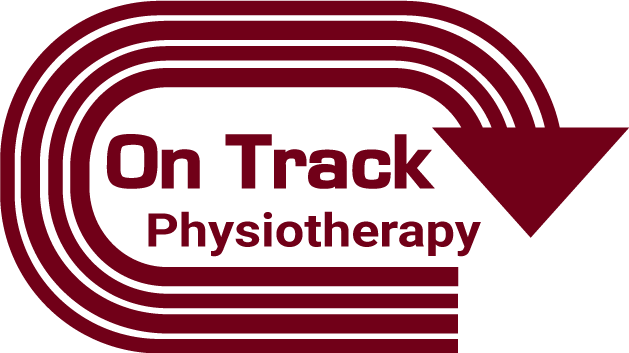Ann Arbor, Mi – Blood flow restriction training (BFR) has been around for a long time. However it is a relatively unknown tool in the physical therapy world. On Track Physical Therapy is one of the few clinics in the state of Michigan that has access to this modality, and to my knowledge the first in Ann Arbor, Mi.
How can blood flow restriction benefit my physical therapy treatment?
Blood flow restriction training involves wrapping a pneumatic cuff around ones extremity and systematically compressing a working limb with the intent to restrict the clearance of blood flow away from a working muscle during rest periods. The restriction of the venous system while still allowing arterial flow will cause a buildup of metabolic muscle byproducts and lead to the enhanced activation of specific muscle growth pathways. Prior to blood flow restriction training, the only previous way to achieve muscle adaptation was with repeated bouts of High Intensity training (HIT).
HIT style training via the American Sports College of Medicine (ACSM) has been defined as intensity levels of 65% up to 85% of a single repetition maximum (1RM). Blood flow restriction training can achieve similar if not better results for inducing muscle growth when compared to what has been traditionally observed with higher intensity training (HIT). Historically muscle adaptations such as muscle size, strength, and endurance have only been seen with high intensity bouts of exercises repeated over a duration of time. What blood flow restriction training has shown, is that similar if not better results can be achieved with this type of training.
Taking this back to the physical therapy setting. Often times due to pain or a surgical lifting restriction we are not able to increase strength during this time. As a result muscle atrophy takes place which will lead to a longer recovery time frame. Furthermore, some individuals may actually be non-weight bearing for an extended time period due to an injury or surgery. Muscle atrophy or loss of strength happens rapidly in these patients (as quick as 2 weeks) because the inability to use the limb or apply any type of resistance activity. Blood flow restriction training is the answer to these problems. Research has shown you can make gains in muscle size, strength, and endurance VO2Max with as little 20-35% of 1 RM and 40% VO2Max settings respectively. These implications are huge to decrease recovery time and returning back to function quicker, allowing us to make true muscular physiological adaptations.
Is Blood Flow Restriction Training Safe?
Other than a DVT or uncontrolled blood pressure, there are very few absolute contraindications to use this modality. When properly monitored and using pressure that has been shown effective through research, blood flow restriction is a very safe modality in all populations.
Please contact On Track Physical Therapy today if you’d like to maximize your rehabilitation process and speed up your recovery.
Click the image below to claim your FREE Sports Injury Guide!

About the Author: Dr. Greg Schaible is a physical therapist and strength coach specializing in athletic performance. He attended The University of Findlay as a student athlete. As an athlete he competed in both Indoor and Outdoor Track & Field where he earned honors as a 5x Division II All-American and 6x Division II Academic All-American. In 2013 he completed Graduate School earning his Doctorate of Physical Therapy (DPT). Greg is the owner of On Track Physical Therapy in Ann Arbor, Mi. Follow On Track PT and Performance on Facebook.



